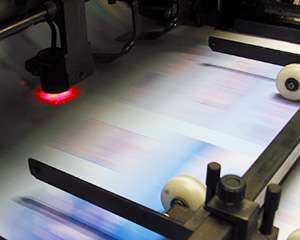In the ever-evolving digital age, preserving and accessing historical documents has taken a giant leap forward with the advent of book scanning technology. Archives, repositories of invaluable knowledge and cultural heritage, have embraced this transformative technology to safeguard delicate manuscripts, rare books and fragile documents. The process of book scanning involves converting physical books into digital formats offering numerous advantages for archives. At Resource Data Management, we are proud to offer book scanning services throughout Pennsylvania and the rest of the Mid-Atlantic Region!

1. Preservation of Fragile Materials
Many archival materials are centuries old and as a result are delicate and prone to deterioration. Book scanning allows archives to create high-resolution digital replicas of these materials, preserving the content while minimizing physical handling. By reducing the need for direct contact with the original documents, archives can extend the lifespan of these artifacts and protect them from environmental factors such as light, humidity and temperature fluctuations.
2. Enhanced Accessibility
Traditional archives often face challenges in providing widespread access to their collections due to geographical constraints, limited visiting hours and preservation concerns. Book scanning breaks down these barriers by digitizing materials, making them accessible to a global audience. Researchers, students and enthusiasts can access the digitized content remotely, fostering a broader dissemination of knowledge and encouraging academic exploration.
3. Searchability and Indexing
One of the significant advantages of digitized archives is the ability to search through vast amounts of information quickly. Book scanning allows for the implementation of optical character recognition (OCR) technology, making the content of scanned books searchable. This feature streamlines the research process, enabling users to locate specific information within seconds, compared to the hours or days it might take to manually sift through physical documents.
4. Space Optimization
Physical storage space is a constant challenge for archives dealing with large collections of books and documents. Book scanning addresses this issue by significantly reducing the need for extensive storage facilities. Once digitized, the content can be stored on servers, cloud platforms or other digital repositories, freeing up physical space within the archive for other purposes or additional acquisitions.
5. Collaborative Opportunities
Digitized archives open doors to collaborative initiatives among institutions, researchers and scholars. By sharing digital copies of their collections, archives can engage in partnerships that promote research, education, and the exchange of knowledge. This collaborative approach not only enriches academic pursuits but also ensures the preservation of historical content through shared resources and expertise.
In the digital era, book scanning has emerged as a powerful tool for archives, offering a dynamic solution to the challenges of preservation, accessibility and space constraints. As archives continue to embrace and implement this technology, they contribute to the democratization of knowledge, fostering a global community of scholars and enthusiasts with a shared passion for preserving and understanding our rich cultural and historical heritage. The journey from fragile manuscripts to easily accessible digital archives marks a crucial step in safeguarding the past for future generations.
Are you ready to embark on a journey of book scanning for your archive in Pennsylvania or the rest of the Mid-Atlantic Region? Call RDM at 215-953-5175 or contact us!
